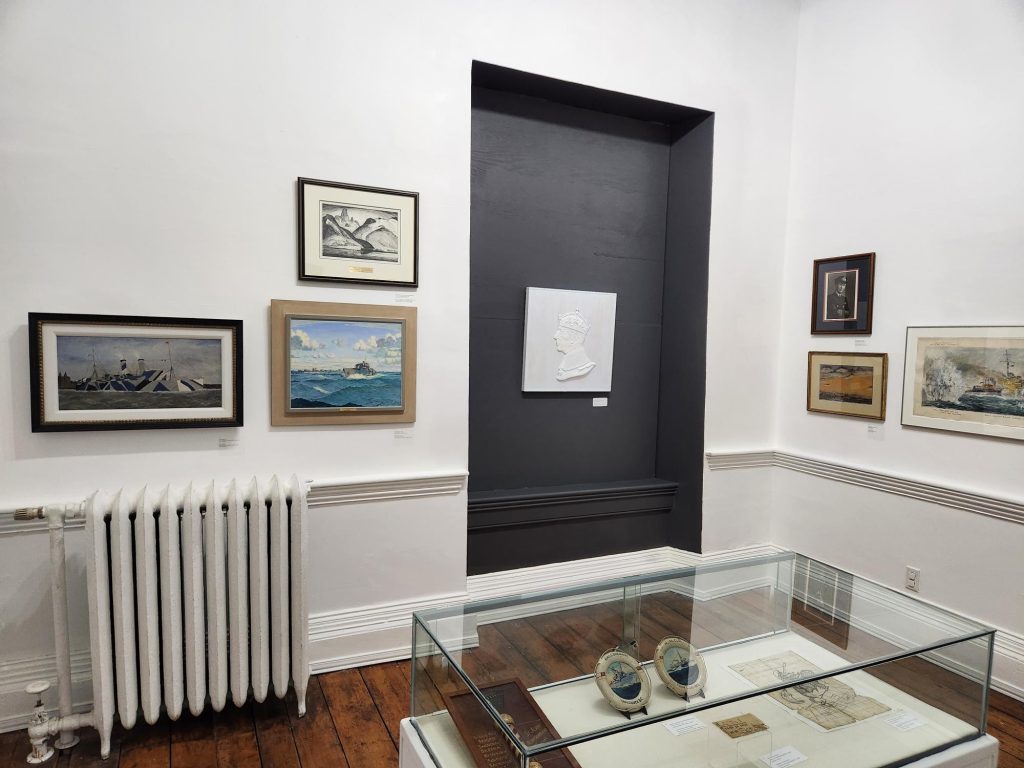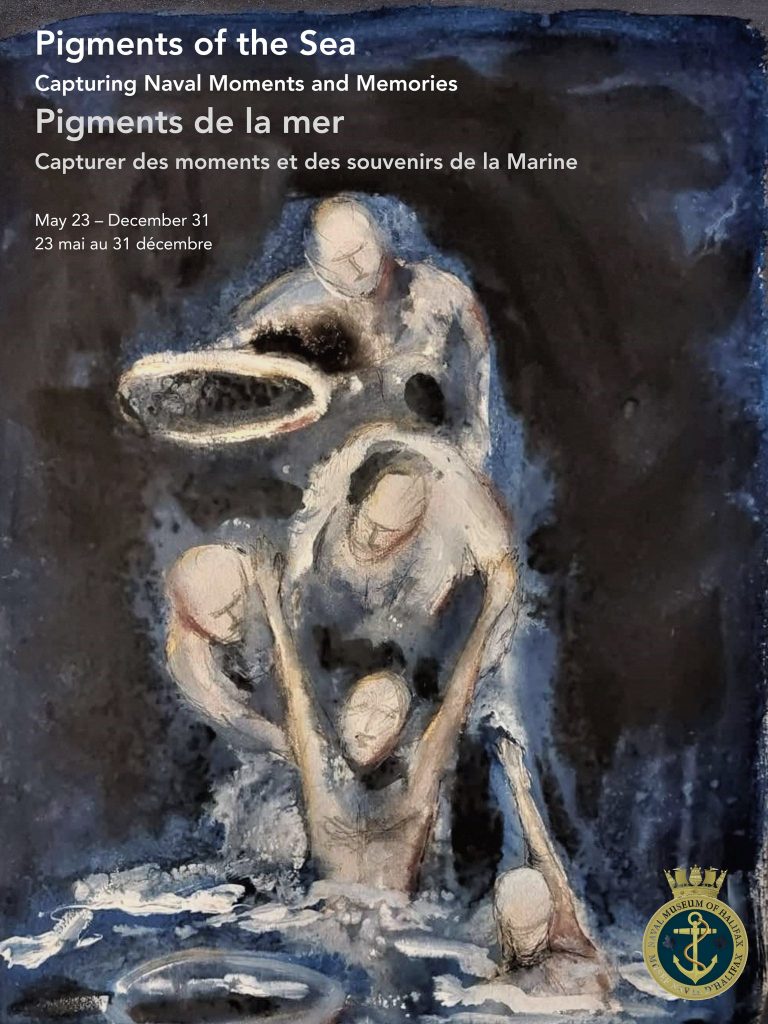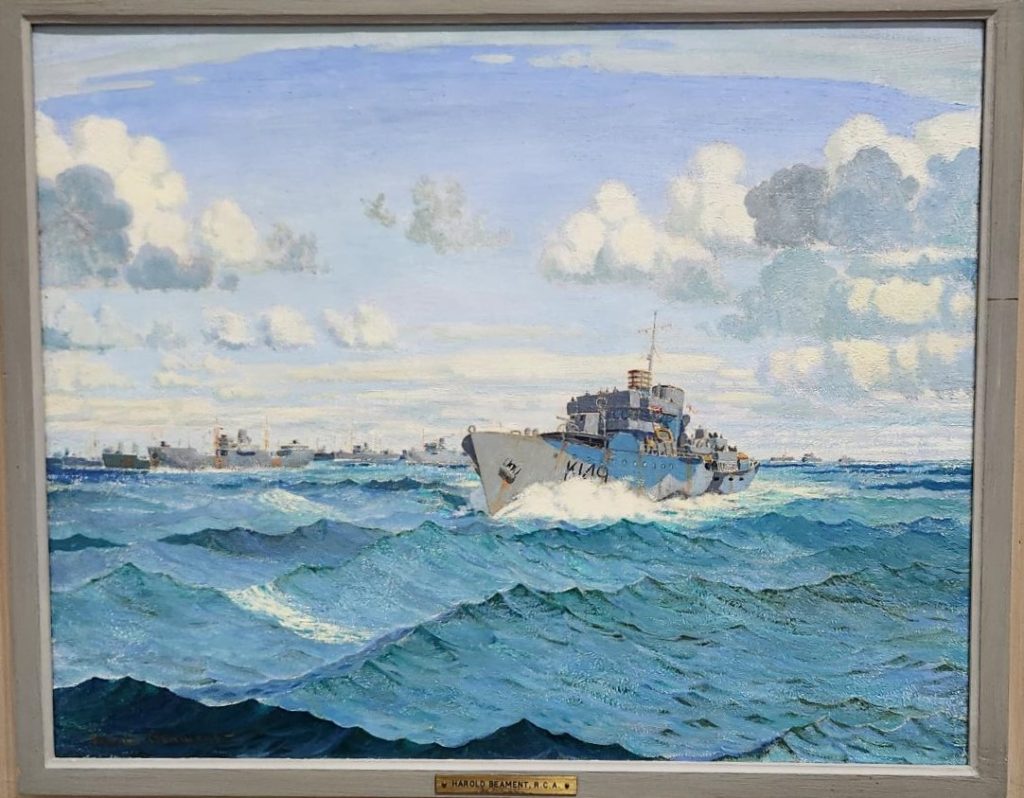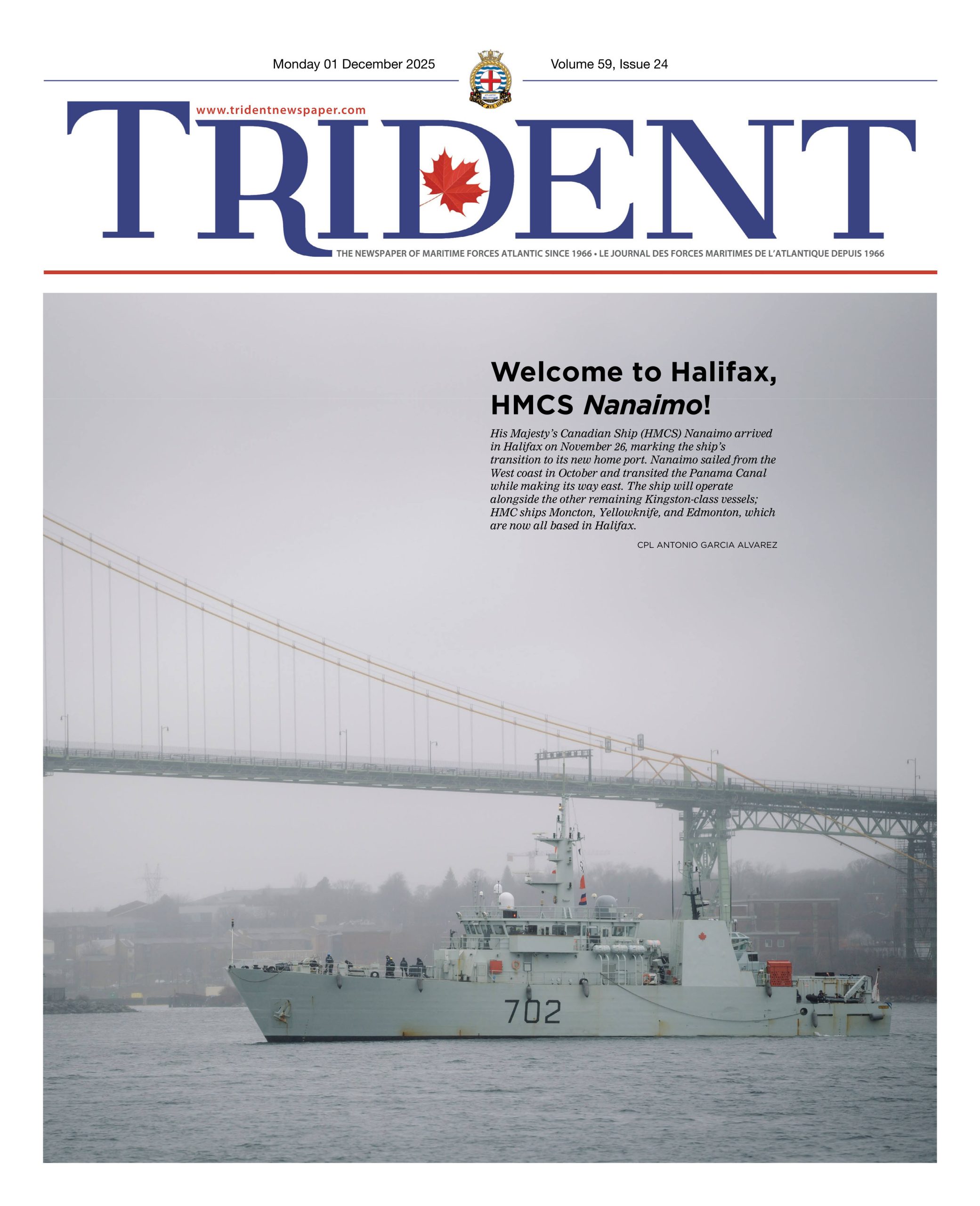
SUBMITTED / SOUMIS
“Every one of these pieces tells a story”
A closer look at the Naval Museum of Halifax’s newest exhibit
By Joanie Veitch
Naval art is a long-standing tradition that depicts more than just the historical record of ships and battles; it’s a testament to the people, the sacrifices they made, and their stories. In the Naval Museum of Halifax’s new exhibit, Pigments of the Sea: Capturing Naval Moments and Memories, those stories are on full display.

The centrepiece of the show, commissioned by the museum for this exhibit, is The Rescue at Sea, a watercolour by Irish contemporary artist Gary Bennett, a former military member.
It was seeing some of Bennett’s work that first inspired the new exhibit, said Jennifer Gamble, Curator at the Naval Museum of Halifax.
“It immediately spoke to me. Seeing his work makes you think about the loss — and so many people did lose their lives — it’s a good reminder to us that there is so much more than just the facts of any particular battle. There was such sacrifice at a personal level.”
The museum’s former Director, now Director Emeritus, Richard Sanderson, highlighted some of the stories behind the artworks during his remarks at the exhibit’s opening reception. One example is the origin of Trawlers off Halifax Harbour, a lithograph print by Arthur Lismer, a member of the renowned Canadian Group of Seven. The piece features Castle-class trawlers painted in vivid dazzle camouflage. At the time, Lismer was principal of the Victoria School of Art and Design (now the Nova Scotia College of Art and Design) and was captivated by these brightly painted ships. Determined to sketch them, he repeatedly ran afoul of harbour security. Eventually, he wrote to the National Gallery for assistance. Eric Brown, then director of the Gallery and a key figure in the Canadian War Artists Advisory Committee, responded by naming Lismer an official war artist during the First World War. Lismer went on to produce a number of works inspired by wartime scenes.
“Every one of these pieces tells a story, and there’s always a story behind the story,” said Sanderson.
Selecting pieces for the exhibit from the museum’s collection of more than 300 artworks was a months-long task, involving the unwrapping of stored items to determine what fit the overarching themes and what would physically fit in the available space on the museum’s second floor. The goal was to present a chronological history of the Royal Canadian Navy (RCN) while also showcasing a variety of artistic mediums. The exhibit includes everything from watercolours and oil paintings to charcoal sketches, lithographs, photographs, and more.
“We have so many artworks in the collection we could have easily doubled the size of the exhibit, so narrowing it down to what we could fit wasn’t easy,” said Sanderson, glancing around the gallery. “I would have liked it if we could have gone floor to ceiling, but I kept getting reminded that just wouldn’t work. I think we got the right balance in the end.”
“Art is a wonderful way of talking about events without having to use words,” he added.
Most of the works in the museum’s collection are housed in the stacks in the lower level of Admiralty House. Some are on loan to other galleries and museums, while others are displayed in offices and buildings throughout Canadian Forces Base Halifax and His Majesty’s Canadian Dockyard.
“We have so many works and such a breadth in our collection, we could have easily done an exhibit featuring only watercolours or only oils, but we decided to showcase the variety of mediums we have,” said Gamble.
Alongside depictions of ships in battle, such as HMS Shannon in Battle with USS Chesapeake and HMCS Assiniboine Sinking the German Submarine U-210 by Halifax artist Tom Forrestall, the exhibit includes a photograph by Yousef Karsh of Adelaide Sinclair, Commanding Officer of the Women’s Royal Canadian Naval Service, and a lithograph by Halifax cartoonist and illustrator Bob Chambers titled In the Public Gardens, showing an American sailor, an RCN sailor, and a Royal Canadian Air Force airman sharing a bench in Halifax’s Public Gardens.

One of the smallest pieces in the exhibit is a carte de visite, a type of postcard popular in the 1860s, depicting Admiralty House.
“It was found at a flea market down in the United States, in Alabama,” said Gamble. “The guy who found it had visited Halifax and recognized it, so he contacted us. He bought it for pennies.”
Museum staff believe the postcard may have made its way to Alabama during the American Civil War, when Halifax was considered neutral territory and hosted a number of Confederate visitors.
“Postcards like this were printed as landmarks to help people navigate the town,” Gamble explained. “Admiralty House would have been a major landmark in the 1860s, so we think it may have been used by a Confederate visitor who took it home. That seems the most likely story of how it ended up there.”
The exhibit opened on May 23 with a reception at Admiralty House and will run until December 31. A written guide is available for visitors, and an audio guide is expected to launch in the coming weeks.






